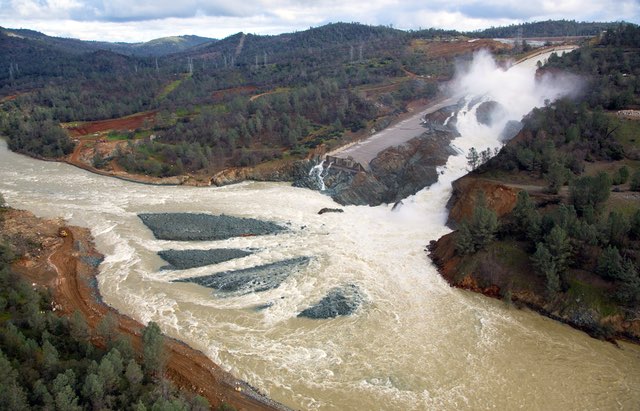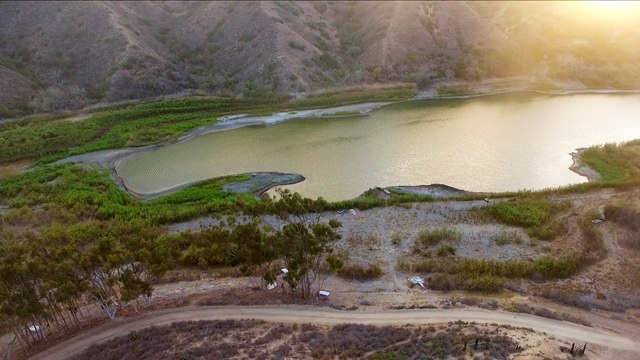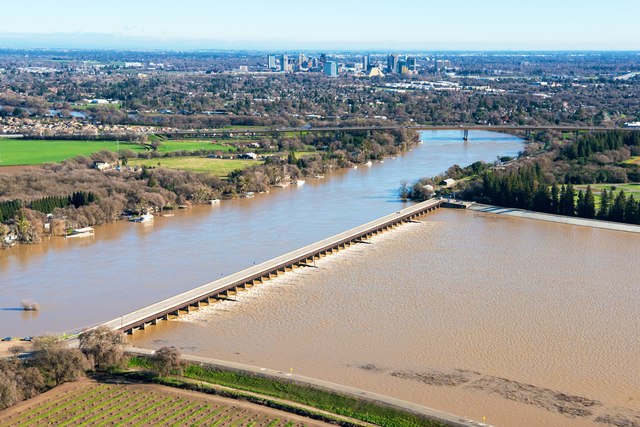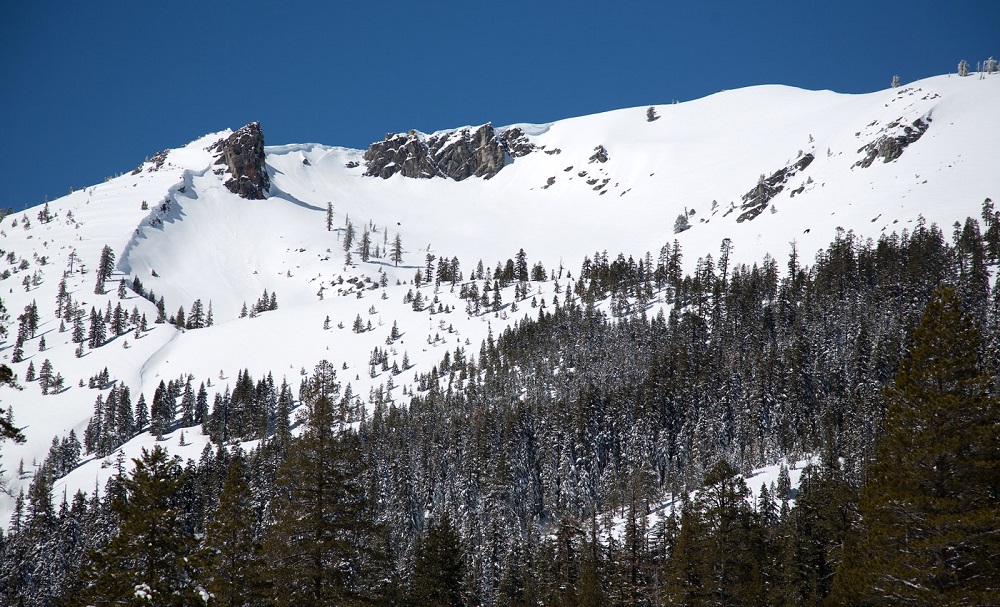From Sportfishing
Fish Report for 3-30-2017

California's Wild Climate to Become More Volatile
3-30-2017
Lydia O’Connor
TO UNDERSTAND HOW climate change is creating a world of extremes, look to California, where the reality of severe drought coupled with intense precipitation threatens millions of residents, a rich ecosystem and the dated infrastructure designed to protect them.
The record rains soaking the most populous U.S. state this winter seemed an impossible reprieve: Following the state’s driest years on record – which forced extreme water rationing and left some of its poorest residents relying on bottled water – a possible record amount of precipitation began inundating the state in late 2016, lifting it out of the red in a matter of months.
But that rain and snowfall is no end to California’s water woes. In fact, it may just be the beginning.
“This has kind of given us a glimpse of what the future might look like,” said Jeffrey Mount, a senior fellow at the Public Policy Institute of California’s Water Policy Center and a water expert at the University of California, Davis.
Heat is a powerful force, rain or shine.
“While more and more people understand that humans are changing the climate, most only know that the planet is warming up,” Peter Gleick, president emeritus and chief scientist of the Pacific Institute, said. “That effect, however, leads to a wide range of other consequences, including rising sea levels, disappearing ice, and – most relevant for recent events in California – an increase in extreme weather, including both droughts and floods.”
California has the most naturally variable climate in North America, and alternating periods of dry and wet are routine, Mount noted. But the state has seen a steady temperature rise since the 1980s, when researchers first warned that a warmer atmosphere would trigger more intense, lengthier dry and wet spells.
“We’re already in a place that has wet wets and dry dries, but those differences are supposed to become even greater over time” as global temperatures rise, Mount explained. The future will leave California with even “wetter wets and drier dries,” like those of the past seven years, he said, noting that temperatures were extremely high during the drought and are still slightly above average during this wet winter.
That exceptional heat during wet and dry periods has several consequences that California isn’t equipped to deal with.
“With higher temperatures, there’s more evaporation from soils, more transpiration from plants, earlier melting of snowpack and relatively more rain rather than snow,” explained Noah Diffenbaugh, a senior fellow and professor of earth system science at Stanford University.
The state’s system of dams, reservoirs and levees is designed to function in a climate where about 30 percent of water is held in snowpacks until it gradually melts and runs off into reservoirs during the spring and summer. But when heat causes more precipitation to arrive as rain rather than snow, like it has this winter, or when snowpack melts too quickly, the system breaks down, like it did at the Oroville Dam last month.
“The more precipitation that falls as snow, and the longer that snow stays on the mountain and later melts, the greater the flood control provided,” Diffenbaugh explained.
Beyond Oroville, where nearly 200,000 people were evacuated after the dam’s spillways eroded last month, roughly 7 million Californians live in places at risk from flooding.
In some instances, long periods of drought preceding heavy rains can raise the flood risk.
Soils can become so dry during a drought that when rains finally do come, the earth is “hydrophobic” and can’t absorb water, causing runoffs and floods, Mount explained. In most cases, that problem won’t persist after the soil has had one good soaking, but there are exceptions for lands scarred by wildfires.
“We’ve had some of the most severe wildfires on record during this drought, and so those all increase the risk of severe runoff in the context of these very wet conditions,” Diffenbaugh said.
Trees and other vegetation are also crucial for catching rain and slowing its journey into the ground or down hillsides. Forests destroyed by powerful wildfires can take years to regrow, leaving most damaged areas prone to flooding for at least two years, the National Weather Service says.
However, we won’t know the effects of the rain now falling on California’s wildfire scars with certainty until formal research is conducted, Mount and Diffenbaugh said.
Those threats should be a major impetus to update California’s water storage systems, experts said. While the state plans to spend around $400 million to improve its 1,400 dams – around half of which are designated as “high hazard potential” – and levees that prevent overflowing river water from flooding cities and farmlands, Mount said we need to spend at least twice that annually after decades of deferrals.
In 1997, he recalled, collapsed levees in the Central Valley, the state’s agriculture hub, flooded hundreds of square miles, killing nine people and causing billions in property damage.
“We did nothing about it at the time,” Mount said. “We didn’t do anything but patch up the holes and move on. For cynical water watchers like me, it was jaw dropping to see it.”
Busted levees are a serious concern for farmers, who are already dealing with the perils of too much rain after years of too little. While the heavy rains have benefited some already planted grains and field crops, the U.S.Department of Agriculture said in its February weather report for the state that some crops are stressed by delayed planting and slowed fieldwork.
“We are long past the point where we should be planning – and acting – to adapt to now unpreventable climate changes,” Gleick said.
“We see this in California because we pay more attention to California. But these changes are happening everywhere around the world.”
This story originally appeared on the Huffington Post, you can read it here.
Photos
< Previous Report Next Report >
More Reports

3-13-2017
Walking south along the coast of Catalina Island, the noises of bustling tourists and the crashing Pacific waves quickly give...... Read More
Yolo Bypass: The Inland Sea of Sacramento
Sacramento River
3-11-2017
LAND OR SEA? The recent rains early this year brought much-needed relief from the five-year drought in California. Reservoirs are full,...... Read More

Website Hosting and Design provided by TECK.net
